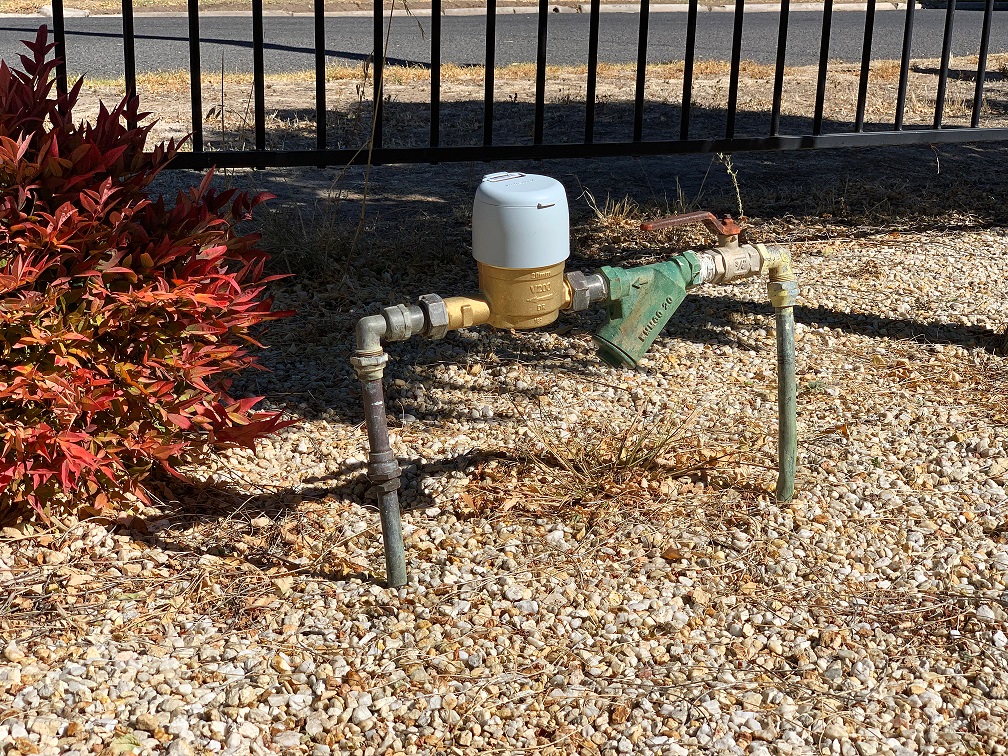
Water leaks are a common maintenance issue that often go unnoticed. If left unaddressed, leaks can be costly and may even lead to significant structural or property damage.
Water Leakage Check
A simple water leakage check can be initially performed by manually reviewing the main water meter. This method requires someone to observe the water meter for at least 5 – 10 minutes during a period where there is no scheduled water use on site. This will generally need to be performed after hours or overnight, depending on how your site operates. If any consumption is detected on the water meter during this time, it could be indicative of a leak and should be investigated further.
If the site has complex or continual 24-hour water usage patterns and you suspect you have a water leak, you can further investigate with a rental smart water meter. This will allow you to gain visibility of even small periods of time with no water usage to rule out leakage, if a spot check is not sufficient. In the event there is leakage, a rental smart meter makes it easier to determine the size of the water leak and also monitor the situation as you work to repair the leak(s).
Smart water meters on a one to two week rental basis are a good low cost option, as they clip onto your existing meter and connect to an online portal. This allows you to monitor your water consumption in near real time, review water flow patterns and pin point possible leaks.
Meter compatibility
Smart water meters typically operate through reading inbuilt and calibrated magnetic pulses produced by the water meter as it turns. Once recorded, these pulses are then converted to a flow rate (litres/minute) within the smart metering software. This means that the smart meter must be connected to a “pulse-enabled” water meter. Through our rental service we are able to tell you if your meter is compatible upfront as part of the review process.
Some examples of compatible meters are shown below:


If your meter is not compatible, you would need to have it upgraded before installing a smart water meter. If it is too costly or difficult to replace a meter, always remember a manual test can also be performed over a longer period of time in order to get more data on the size of the leak.
The Cost of Leaks
A leak of any size will cost you money, as water is being wasted. A leak of just 1 litre per minute, if left unrepaired, equates to 525,600 litres of water wasted in a year. This could be the equivalent of around $2,100/year (depending on your water cost). This ‘saving’ is not the only factor as this volume of water under a building in the soil profile could present a more catastrophic structural, insurance or maintenance risk.
Keep in mind that an underground leak can get worse slowly over time. If you only compare repair costs vs. cost savings based on recent readings, both the savings and risk of structural issues can increase overtime.
Example: In the chart below, an aged care facilities leakage rate increased from 10 to 35 litres per minute over nine months from October 2018 to July 2019. The immediate drop in August 2019 shows water consumption post leakage repair, when this was eventually identified and rectified.

Repair and Review
Rectifying leakage can be as simple as repairing dripping taps, or as complex as repairing a hole in underground pipework. The ‘leak’ may also be a series of smaller leaks (e.g. 5 – 10 smaller leaking pipes, taps, fittings and fixtures).
There are various methods that can be applied in order to find the source of the leak(s). Each method has benefits and drawbacks, depending on the size of the facility and the number of possible leakage sources:
-
- Perform water shut-downs in key areas with rental smart metering installed. This method involves turning off water supply to certain areas or zones after-hours and checking the flow rate over time as each area is taken offline for a small period of time. If there is intermittent general water usage after-hours, smart metering can then identify which specific zone(s) have leakage given the flow rate is observed to drop to zero after isolating a zone (it can be quite obvious using this method).
- Review all possible leakage sources (i.e. check all taps, appliances, cooling towers, pipework and so forth). For underground pipework in a certain zone, this can be as simple as looking for patches of ground with more grass or green spots, indicative of underground leakage. If pipework is located under concrete or other flooring, professional leak detection equipment may be required.
- Hire a leak detection professional with access to specialised equipment in combination with rental smart water metering. Relative to the size of the leak, moving to this step straight away is often justified to get the problem immediately in order.
Case Study 1
At a Queensland site an after hours manual test was performed and continual water consumption was flagged. This was further investigated with a rental smart water meter and zone isolation to reveal an easily fixed 6.5 L/min leak. A leak of this size would waste 3,416,400 litres/year, at an annual cost of approximately $15,500.
Case Study 2
Another Queensland site had a suspected leak and a smart water meter was installed. The smart meter with zone isolation and a leakage detection crew found and fixed a large leak of 40 L/min. This amount of water leakage equates to 21,024,000 litres of water wasted in a year, with a cost of $71,600 for the business (based on the water rates at the time of the assessment).